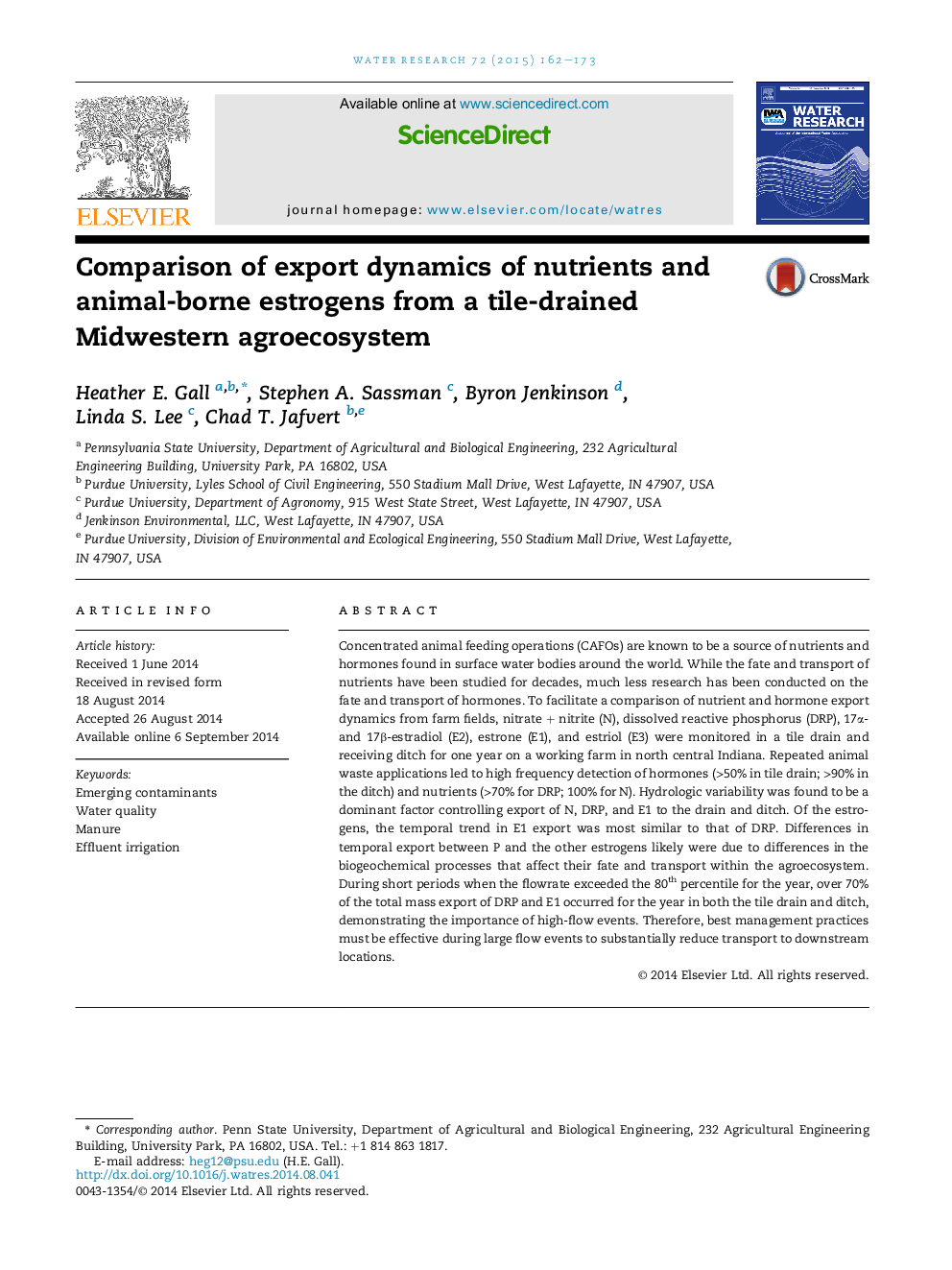| کد مقاله | کد نشریه | سال انتشار | مقاله انگلیسی | نسخه تمام متن |
|---|---|---|---|---|
| 6366197 | 1623096 | 2015 | 12 صفحه PDF | دانلود رایگان |
- We compared export dynamics of nutrients and estrone (E1) in an agroecosystem.
- Nutrients (N, DRP) and E1 exhibited weak C-Q and strong L-Q relationships.
- Export of N, DRP, and E1 was dominantly controlled by hydrologic variability.
- High-flow events exported â¼75% of DRP and E1 loads.
- To improve water quality, best management practices must target high-flow events.
Concentrated animal feeding operations (CAFOs) are known to be a source of nutrients and hormones found in surface water bodies around the world. While the fate and transport of nutrients have been studied for decades, much less research has been conducted on the fate and transport of hormones. To facilitate a comparison of nutrient and hormone export dynamics from farm fields, nitrate + nitrite (N), dissolved reactive phosphorus (DRP), 17α- and 17β-estradiol (E2), estrone (E1), and estriol (E3) were monitored in a tile drain and receiving ditch for one year on a working farm in north central Indiana. Repeated animal waste applications led to high frequency detection of hormones (>50% in tile drain; >90% in the ditch) and nutrients (>70% for DRP; 100% for N). Hydrologic variability was found to be a dominant factor controlling export of N, DRP, and E1 to the drain and ditch. Of the estrogens, the temporal trend in E1 export was most similar to that of DRP. Differences in temporal export between P and the other estrogens likely were due to differences in the biogeochemical processes that affect their fate and transport within the agroecosystem. During short periods when the flowrate exceeded the 80th percentile for the year, over 70% of the total mass export of DRP and E1 occurred for the year in both the tile drain and ditch, demonstrating the importance of high-flow events. Therefore, best management practices must be effective during large flow events to substantially reduce transport to downstream locations.
322
Journal: Water Research - Volume 72, 1 April 2015, Pages 162-173
